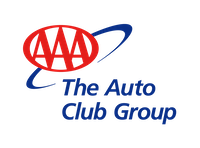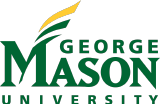Amtrak IS A TRAILBLAZER
Amtrak keeps the trains running with Salesforce.
For most organizations, “keep the train moving” is merely a common office expression. But for Amtrak, it’s quite literal.
Amtrak serves over 85,000 passengers a day from 500 stations spread across 46 states, Washington, D.C., and three Canadian provinces. Popular routes, such as commuter trains along the Northeast Corridor, support as many as 2,100 passenger trains and 60 freight trains daily. Vacation-oriented routes, like those that run from Portland, Oregon, to Glacier National Park in northern Montana, host long-distance trips that span anywhere from 12 hours to the better part of a week. Amtrak is the country’s only national passenger rail provider.
Our team here at Salesforce had the chance to sit down with several members of Amtrak’s leadership team and hear how their enterprise-wide transformation effort moves America faster with a digital, modern mission. “Amtrak is the country’s passenger railroad,” said Morrell Savoy, VP of Long Distance Operations. “Whether it’s a daily commuter train or scenic vacation travel, it represents the history of the country. As you meet more customers, you understand what you mean to their experience; you understand that we are a part of their experience.” There’s a sense of adventure that is unique to the Amtrak travel experience.
Amtrak stewards an era of transformation.
As mobile-ready business models have become the standard, people have come to expect personalized service when they engage with any organization. They assume systems and processes will move forward based on customer-centric data and insights, even in an organization the size of Amtrak. Amtrak recognized this as an opportunity; the organization embarked on an enterprise-wide transformation focused on the customer experience — an effort that included everything from window-clad observation cars to a digital-technology infrastructure.
Walk through Amtrak's deployment.
“Simplicity is the ultimate sophistication.”
“There are key pillars to the Amtrak mission,” said Sovan Shatpathy, Amtrak CTO, “(1) safety and security, (2) customer centricity — that is, a focus on customer needs, and (3) operational and financial excellence. Everything we do is grounded in those three pillars.”
“The primary challenge in front of me was ‘how do we take this railroad company, which moves close to 32 million people every year, and standardize things? How do we move it to a technology world that allows for our customers, partners, and employees to be happy and productive?’” Shatpathy continued. Referencing the famous Leonardo da Vinci quote, “Simplicity is the ultimate sophistication,” Shatpathy and his team focused on simple, intuitive, and scalable technology options, paired with an outcome-oriented mindset, to drive three objectives:
Objective 1: Business process simplification and consolidation.
Amtrak had inherited a number of rail systems and management applications, which had proliferated as the organization grew. As the organization moved from mainframe to client server to cloud service providers, executives knew they needed to simplify the technology model. “We analyzed the entire application ecosystem and identified ways to potentially aggregate apps into logical bubbles, consolidating duplicative business processes along the way. These apps are in a wide variety of lines of business such as mechanical, engineering, safety, operations among others. Based on characteristics like time to market, ease of adoption, optimizing total cost of ownership, we came up with a phased approach which detailed out what apps could go as a part of the initial wave, what’s goes in next wave and so on..” The IT team rationalized each and every app against a distinguishable set of success criteria on a few select, strategic platforms, including Salesforce.
Objective 2: Experience enhancement and optimized total cost of ownership.
Following the consolidation effort, Shatpathy and his team established a competency center, a shared service technology group that focuses on standardizing the skills, processes, and infrastructure Amtrak needed to move from point solutions to an integrated, core platform strategy. The competency center serves as a strategic foundation that scales Amtrak IT, giving the organization the ability to support requests for new tools or services from internal customers — line-of-business teams representing various aspects of the passenger experience — in a timelier manner. “We’re not defining technology needs as much as we’re defining business needs, and then using tech to solve those problems,” said Shatpathy. “Fast and agile are key, as it’s all about business agility and time to market.”
Objective 3: Enable pervasive mobility, demonstrated by apps like TOPS.
Amtrak’s competency center empowered the company to support various business needs, fast. One such request came from the Chicago Union Station team where employees, 70% of which are entirely mobile, coordinate the many services and safety checks required to turn over long-distance trains.
“When the California Zephyr arrives in Chicago, it's the end of the journey for the 1,100-plus passengers on board. But it's the beginning of the train-servicing process. We are a rolling cruise ship on land, so to speak,” said Savoy. The slightest delay in any train turnover logistics, from safety inspections to restocking the dining car, can have big ripple effects. Keeping the schedule moving across such a mobile environment “is an incredible responsibility” said Savoy, who started at Amtrak as a train conductor in the Washington, D.C., Union Station, and has seen every side of servicing a train.
Built on Salesforce, the TOPS (Train Operations) app tracks the train servicing. Supervisors can log when their team is done with a given service, alert their counterparts of any issues or delays, and pull reports that capture performance stats, common disruptions, and more. The TOPS app opened up communications and visibility across the entire train turnover process, making it easier to understand, quantify, and replicate best practices that could otherwise get lost in an expansive workplace.
“We don’t have a tech-dominated workforce, so we needed an application that was simple enough yet innovative enough that it would be adopted without a ton of training,” Savoy continued. “At the end of the day, we’re a federally subsidized corporation, so we have to be good stewards of the taxpayer’s money. Becoming efficient is what we do, and we’re using technology to deliver this business need.”
Amtrak institutionalized innovation management as a practice — as a service — on the cloud, using transformation objectives to define the modern mission.
Hear from the Experts.
Amtrak defines the intersection of technology, travel, and the modern mission.
Amtrak demonstrates five best practices in the organization’s work with the cloud:
1. Make the customer experience the #1 priority. Savoy, Shatpathy, and the rest of the Amtrak team turned to the customer experience to guide their decision-making process. Conversations started with questions like, “How do we enable a superior customer experience?” and ended with assessments like “We understand the customer holistically, giving us the context to better serve the customer base going forward.”
2. Develop an alliance between IT and line of business. By starting with the business requirements resulting from customer-centric priorities, and then using IT expertise to solve them, Sovan and his team saw “the actual value of cloud technology as it impacts our workforce and our customers. We have had a frontline view of how it applies,” helping Amtrak mitigate any future square peg, round hole conundrums.
3. Leverage subject-matter experts — via in-house and external partnerships. “For us, if it’s a choice between spending more time to optimize our workforce and develop actual business value using technology – as opposed to maintaining technology itself –the choice is clear. Cloud makes a great deal of sense for us.” By developing a repeatable set of core competencies, outlined by cloud subject matter experts, Shatpathy and his team were able to keep their focus on the mission instead of tasks more reflective of a technology company.
4. Find a platform that meets key success criteria. “How can we make the life of the conductor, the engineer, the people who are in the train cars, easier? How can we give them all the tools and technology they need, within a handheld device, and make them more productive while they go about the business of running our trains, serving our customers, and taking people from one place to another? At a high level, driving Customer 360 view creating loyal Amtrak customers for life along with enabling workforce productivity for happy and productive employees is what inspires me the most. This is a unique opportunity to drive them both,” Shatpathy continued.
5. Don’t shy away from a co-exist strategy. “We skipped reinventing some very old systems, and instead are building engagement layers on top of them. As a result, we are unlocking more value. This mix of the ‘old’ and the ‘new’ technology platforms, enables us to support employees who are steeped in legacy system knowledge as well as newer hires who tend to be more familiar with modern approaches.”
Amtrak has worked to bring a forward-thinking approach to a mission immersed in safety, scale, and a quality customer experience. Amtrak’s investment in innovation is an investment in both its customers and its mission.






